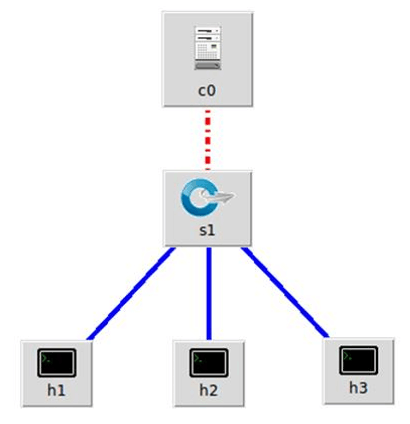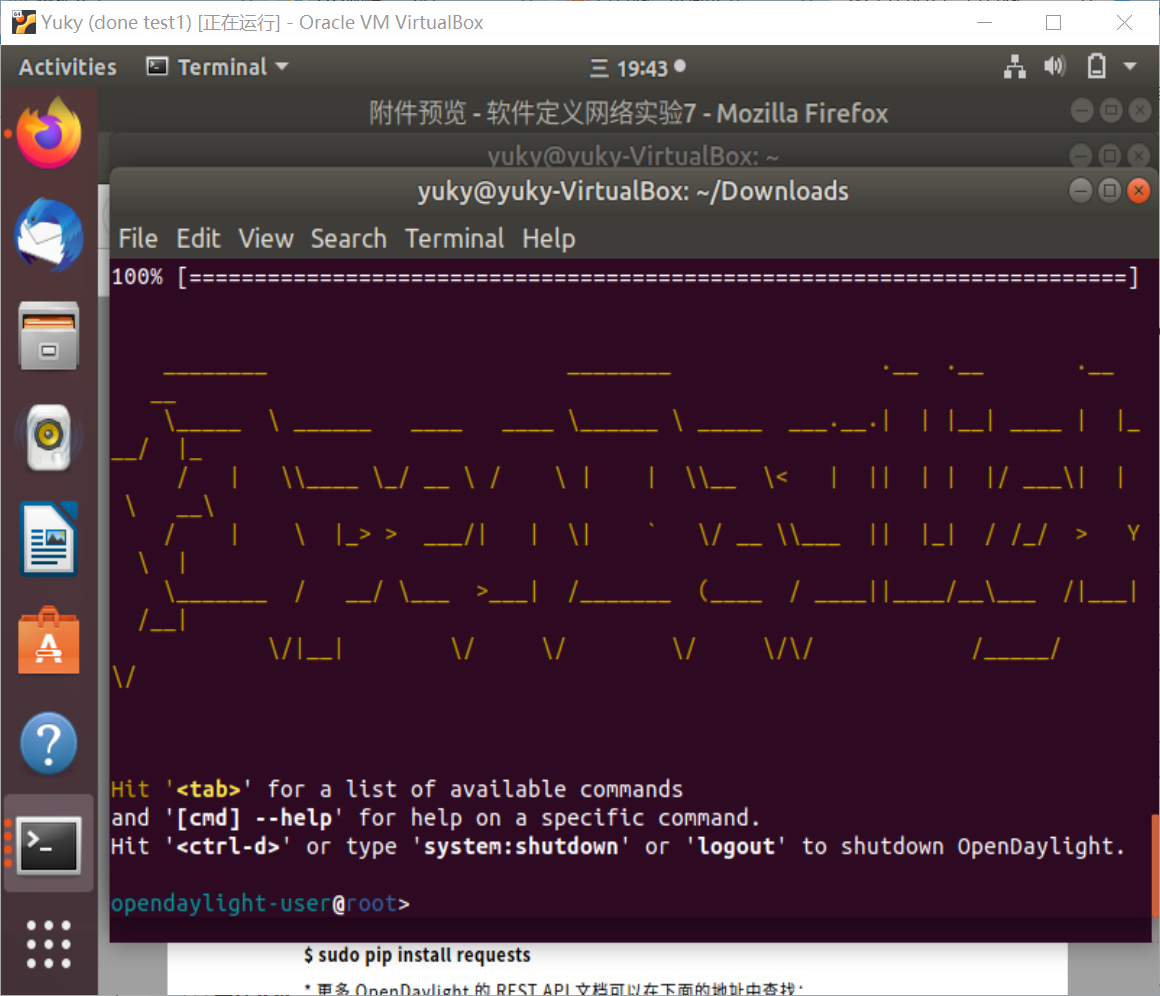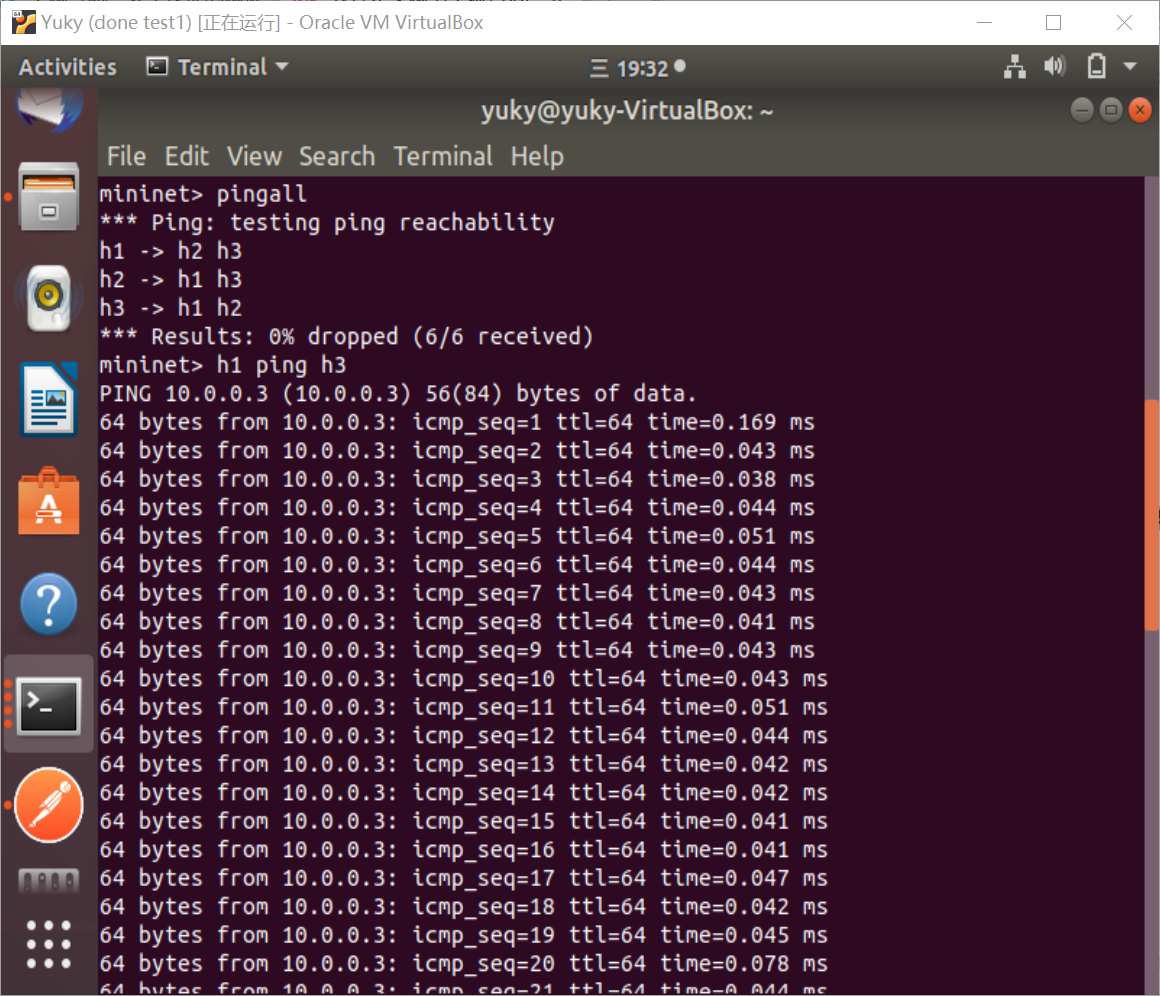实验 7:OpenDaylight 实验——Python 中的 REST API 调用
一、实验目的
对 Python 调用 OpenDaylight 的 REST API 方法有初步了解。
二、实验任务
本实验需要用另一种方法完成上一个实验相同的功能,即通过 Python 程序调用
OpenDaylight 的北向接口下发关于硬超时的流表,实现拓扑内主机在一定时间
内的网络通断。实验拓扑如下:

三、实验步骤
1. 实验环境
安装了 Ubuntu 18.04.5 Desktop amd64 的虚拟机
2. 实验过程
(1)生成拓扑 $ sudo mn --topo=single,3 --controller=remote,ip=127.0.0.1,port=6633 --switch
ovsk,protocols=OpenFlow13
生成拓扑的方法同之前的实验一致。

(2)编写 Python 代码和 JSON 格式的请求内容 $ nano odlnorth.py
#!/usr/bin/python import requests from requests.auth import HTTPBasicAuth def http_put(url,jstr): url= url headers = {'Content-Type':'application/json'} resp = requests.put(url,jstr,headers=headers,auth=HTTPBasicAuth('admin', 'admin')) return resp if __name__ == "__main__": url = 'http://127.0.0.1:8181/restconf/config/opendaylight-inventory:nodes/node/openflow:1/flownode-inventory:table/0/flow/1' with open('hardtimeout.json') as f: jstr = f.read() resp = http_put(url,jstr) print resp.content
由于是下发流表,因此需要有 http 请求的具体内容,同之前的 Postman 一样,
也是以 JSON 格式来表示。
编辑 hardtimeout.json 文件:
$ nano hardtimeout.json

文件中不包含 http 请求的 url 地址
{ "flow": [ { "id": "1", "match": { "in-port": "1", "ethernet-match": { "ethernet-type": { "type": "0x0800" } }, "ipv4-destination": "10.0.0.3/32" }, "instructions": { "instruction": [ { "order": "0", "apply-actions": { "action": [ { "order": "0", "drop-action": {} } ] } } ] }, "flow-name": "flow1", "priority": "65535", "hard-timeout": "10", "cookie": "2", "table_id": "0" } ] }
(3)运行 Python 代码,完成流表下发
$ python odlnorth.py

结果验证方法同实验 6。
提示:运行代码如果报错:ImportError: No module named requests,可尝试
如下方法。
{ "flow": [ { "id": "1", "match": { "in-port": "1", "ethernet-match": { "ethernet-type": { "type": "0x0800" } }, "ipv4-destination": "10.0.0.3/32" }, "instructions": { "instruction": [ { "order": "0", "apply-actions": { "action": [ { "order": "0", "drop-action": {} } ] } } ] }, "flow-name": "flow1", "priority": "65535", "hard-timeout": "10", "cookie": "2", "table_id": "0" } ] }
$ sudo apt-get install python-pip //如果 pip 没装的话需要运行
$ sudo pip install requests



h1 ping h3有十秒左右的预期,实验结果符合要求。
四、实验心得
实验中由于换行和-符号导致代码运行出现错误,最终发现并得以解决。总体来说,本实验和上次实验的实现内容没有差别,有了上次的经验(试验无数次),我很顺利的完成了。选做题较难,我参考并学习了大佬的代码,得到了相同的实验结果,初步了解了利用Python程序获取本实验拓扑中的交换机s1中活动的流表数目active-flows的办法。


 浙公网安备 33010602011771号
浙公网安备 33010602011771号